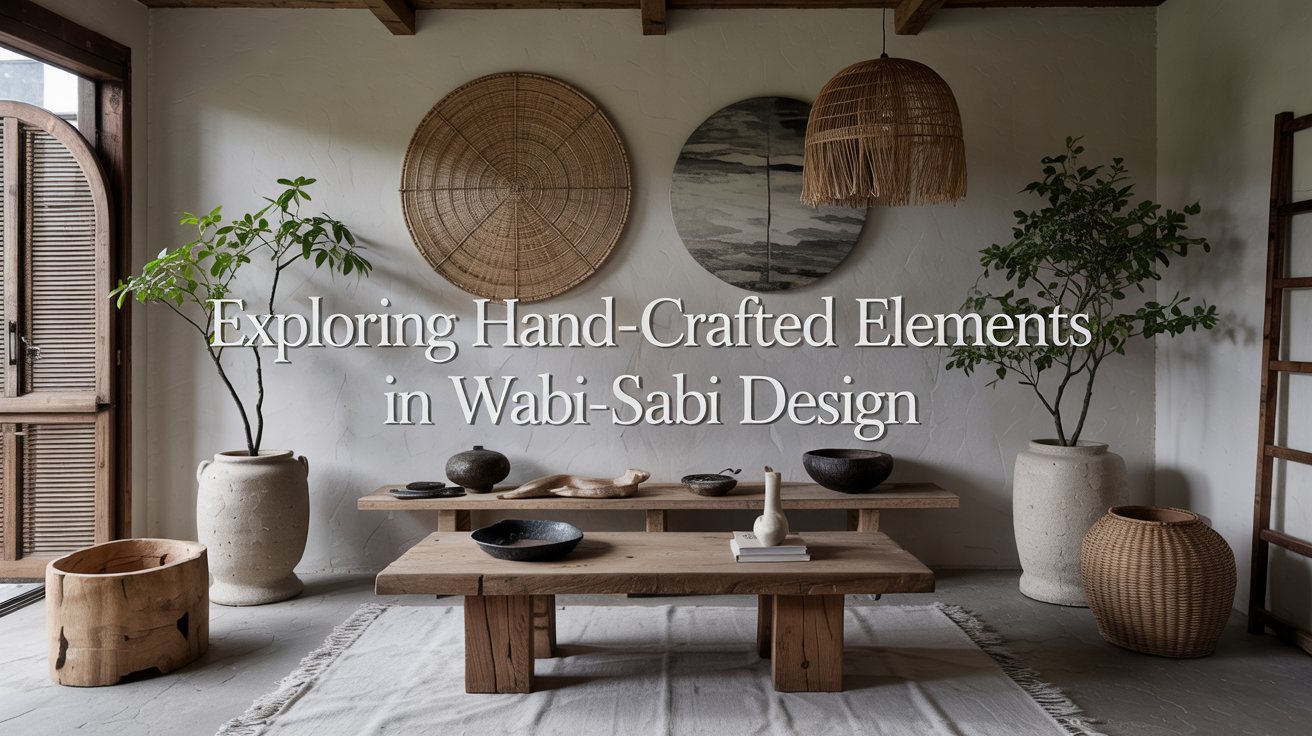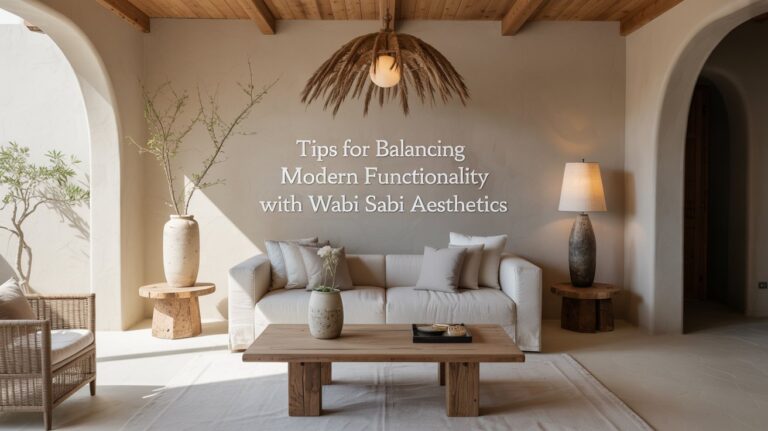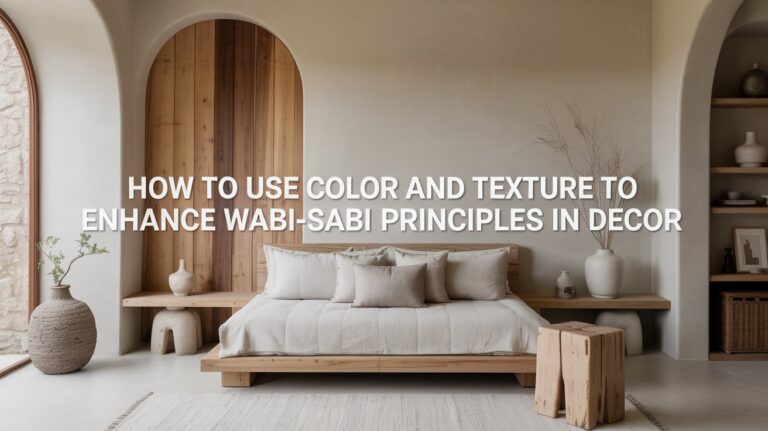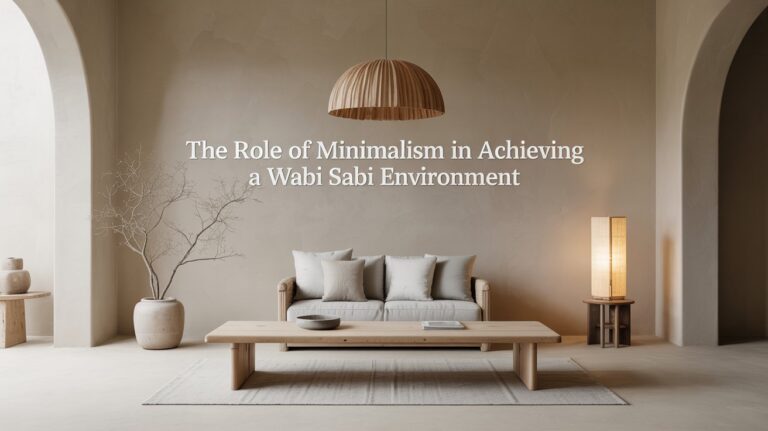Exploring Hand-Crafted Elements in Wabi Sabi Design
I have been, or can be if you click on a link and make a purchase, compensated via a cash payment, gift, or something else of value for writing this post. As an Amazon Associate, I earn from qualifying purchases. Please read my full Affiliate Disclosure for more information.
In wabi sabi, you seek the hand’s quiet imprint: imperfect textures, patina, inexact joins that tell a patient story. You’ll notice edges formed by careful hands, not machine precision, and seams that read as honest punctuation. Materials carry wear as memory, aging gracefully rather than failing. Subtle asymmetry invites you to pause, letting restraint shape meaning. Slow making becomes your discipline, turning ordinary spaces into intimate conversations. If you continue, you’ll uncover more of this patient craft.
Key Takeaways
- Hand-crafted elements emphasize imperfection and human imprint, contrasting mass production with deliberate, unhurried craftsmanship.
- Textures and patina reveal stories, aging, and use, guiding appreciation beyond flawless surfaces.
- Inexact joins and hand-formed edges create honest punctuation, light and shadow, and tactile depth.
- Natural materials evolve with time, where patina and wear reflect care, use, and material dialogue.
- Subtle asymmetry and slow, patient making cultivate character, restraint, and authentic, calm design.
The Value of Hand-Crafted Craft in Wabi Sabi
The value of hand-crafted craft in Wabi Sabi rests in the imperfect, deliberate touch that machines can’t imitate. You sense how mass production churns sameness, while your hands imprint subtle variation that tells a story. You weigh time against precision, choosing the unhurried rhythm that yields character, not perfection. Digital fabrication may guide lines, yet your decisions—where to leave a scar, how to sand a edge—preserve the human in the object. In this balance, restraint becomes meaning. You honor materials, celebrate flaws, and let modest forms whisper rather than shout. Simplicity, clarity, and intention illuminate the craft.
Embracing Imperfection: Techniques and Textures
You explore rough textures, listening for the quiet edges where irregularity speaks.
Let the patina of materials reveal stories, not flaws, as time and touch soften each line.
In this practice, imperfection guides technique, inviting subtle, honest contrast.
Rough Texture Exploration
Soft textures arrive in quiet increments, each range of roughness revealing a story you can feel before you name it. You measure by touch, not certainty, letting grain and grit become speech. Rough texture exploration invites you to listen to the surface’s pauses, to hear the slow drum of time in every irregularity. You seek ceramic textures as evidence that craft breathes through flaws, not around them, and you honor the memory of hands that pressed and shaped. Tactile surfaces teach restraint: simplicity sharpened by texture, presence gathered from imperfection, clarity found in honest material dialogue.
Subtle Material Patina
Subtle material patina arrives quietly, a record of use etched in the surface rather than stamped on it. You observe how time tints edges, softens lines, and elevates quiet texture into meaning. This is your invitation to slow, to notice, to trust.
- Antique finishes reveal history without shouting
- Surface whispers shift with touch, becoming fingerprints of care
- Patina harmonizes with organic color palettes, unforced and true
- Craftsmanship breathes, aging gracefully rather than resisting
You value clarity over spectacle, precision over haste, and the beauty found in subtle transformation.
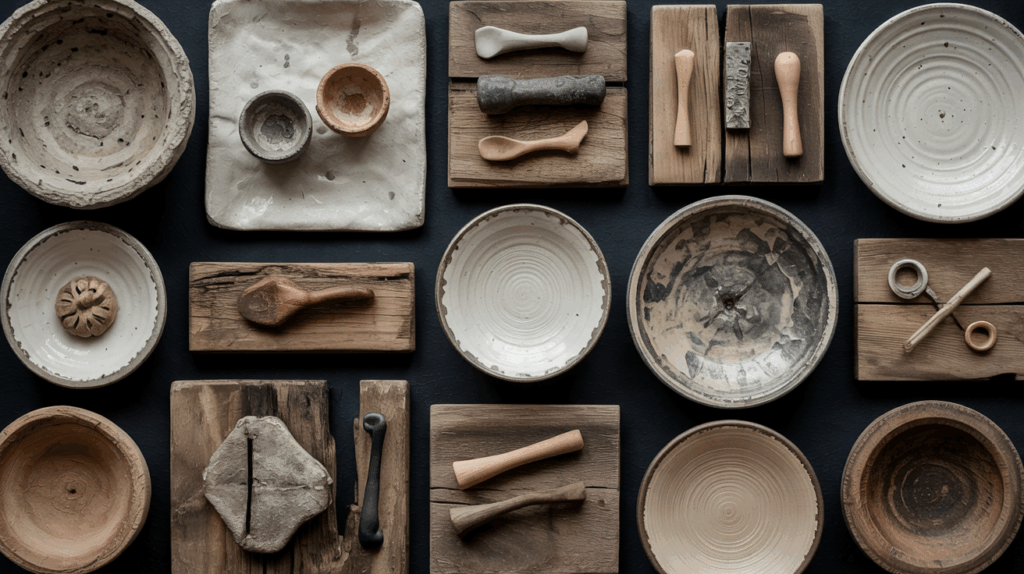
Human Touch: Hand-Formed Edges and Inexact Joins
Edges aren’t perfect, and that’s the point: hand-formed lines cradle light and shadow, inviting touch without apology. You notice how edges breathe, not collide; the surface bears minute shifts, a quiet diary of effort. Inexact joins become punctuation, guiding the eye toward honesty rather than illusion. You resist machine made perfection and digital fabrication as your baseline, choosing tactility that reveals process. Each seam learns from intent, not impersonation, and becomes a pause for reflection. Precision here is character, not constraint—humility in craft. You value clarity: form follows patient hands, and understanding follows careful attention.
Natural Materials: Patina, Wear, and Time
Natural patina isn’t wear you fix; it’s time you learn to read. You’ll notice a quiet history on surfaces, a dialogue between material and time. Each mark is a whisper, not a flaw.
- Ceramics durability becomes a map of use, heat, and care.
- Metal oxidation tells stories of exposure, breath, and patience.
- Surfaces soften with handling, revealing intent and restraint.
- Patina evolves, guiding your eye toward craftsmanship over haste.
You approach objects as partners, not projects, honoring what they reveal. Minimal, meticulous care sustains beauty, and time forgives the patient observer.
Subtle Asymmetry: Designing With Irregularity
Irregularity isn’t a flaw to fix; it’s a signal that design lives in a living world. You recognize subtle irregularity as a guide, not a mistake. In practice, you embrace organic irregularities, letting small misalignments breathe character into form. Your eye seeks asymmetrical balance rather than perfect symmetry, balancing weight, space, and texture with restraint. The result feels honest, tactile, and calm, a quiet invitation to pause. You measure not by precision alone but by feel—how the surface rests, how a line curves. In this approach, restraint becomes freedom, and imperfect harmony becomes your most faithful representation of nature’s flux.
Process Over Perfection: Slow Making and Patience
Patience isn’t laziness; it’s a method. You move with measured intent, valuing process over quick finish. In slow making, patience tunes your eye for nuance, turning effort into insight rather than impulse.
- Embrace digital precision without surrendering soul.
- Weigh each gesture against mass production’s rush.
- Let small flaws teach you, not shame you.
- Create with time as your collaborator, not your foe.
This discipline steadies your hand, revealing quiet beauty. Your work resists haste, inviting mindfulness. You’re not resisting progress; you’re refining it—crafting meaning as you unfold, knot by knot, grain by grain. Patience becomes method, and method becomes clarity.
Integrating Handmade Elements Into Everyday Spaces
We invite handmade elements to enter the everyday by honoring the spaces they touch: a carved handle on a kitchen drawer, a woven rug that hums with its own texture, a ceramic mug whose edge isn’t perfectly round. You blend them into routine without forcing perfection, letting each piece tell its story through gentle imperfection. Observe ceramic glazing’s quiet sheen glassy or matte, and how color variation whispers provenance rather than uniformity. Arrange surfaces with restraint, so contrasts stay respectful. In daily rituals, these elements become focal whispers, guiding you toward a calmer, more intentional room and a softer, more honest presence.
Conclusion
In your hands, craft becomes quiet conversation. You don’t chase flawlessness; you listen for the pause between strokes. Every edge, every tremor of glaze, speaks of time spent and care given. You welcome the irregular, the worn, the subtly imperfect as true texture. Let materials breathe, age, patina with you. Slow making isn’t wasted; it’s a ledger of intention. In your space, handmade elements whisper a humble, enduring calm. The everyday feels singular, alive, human.
